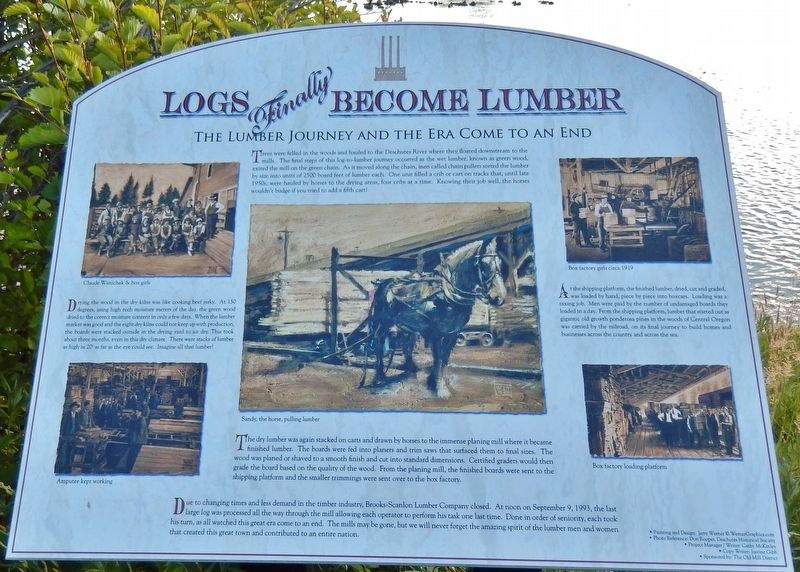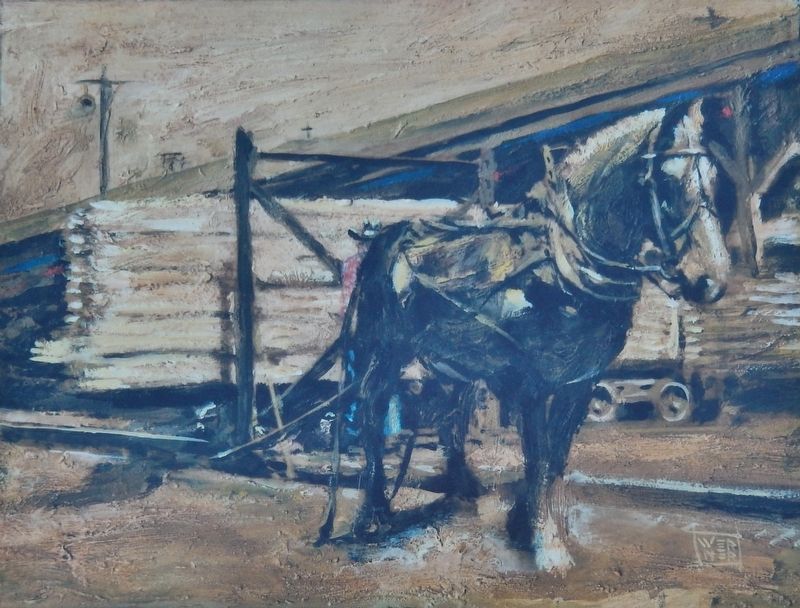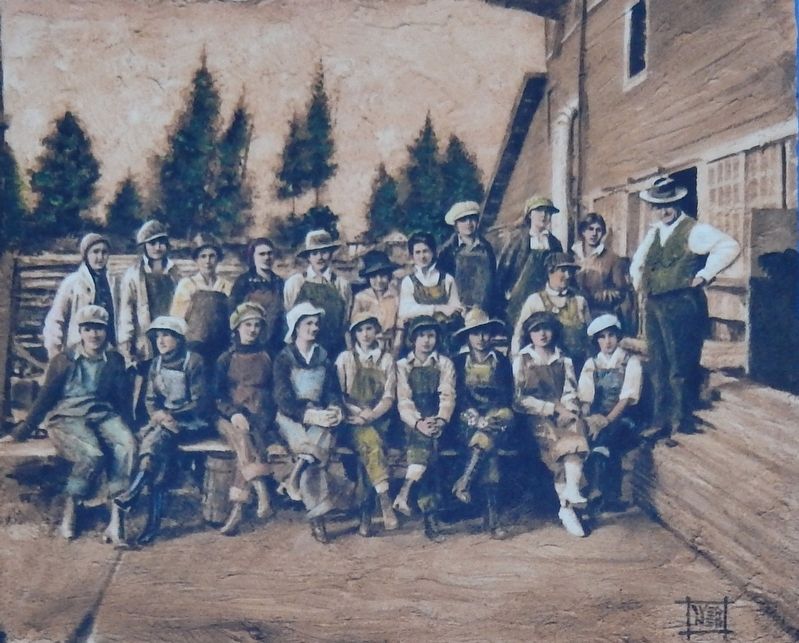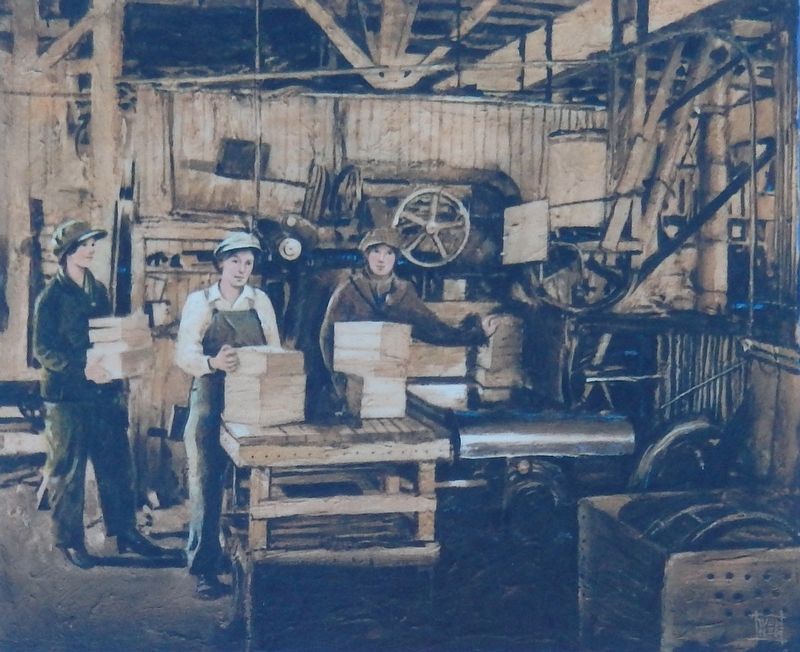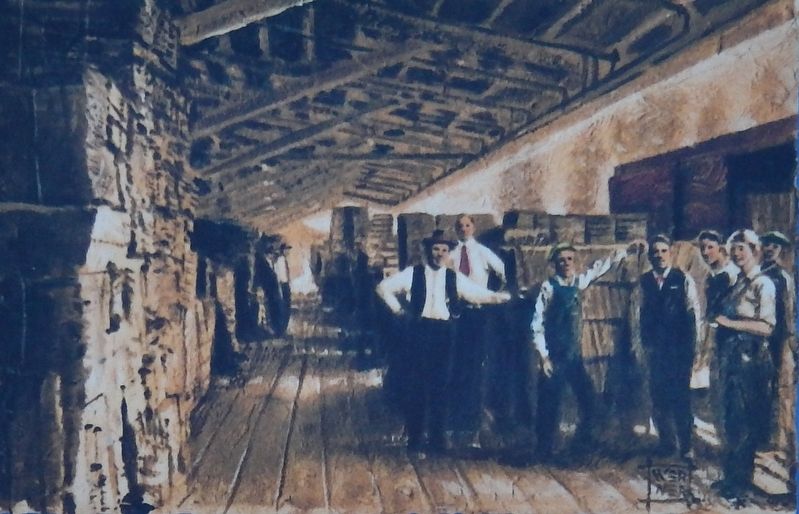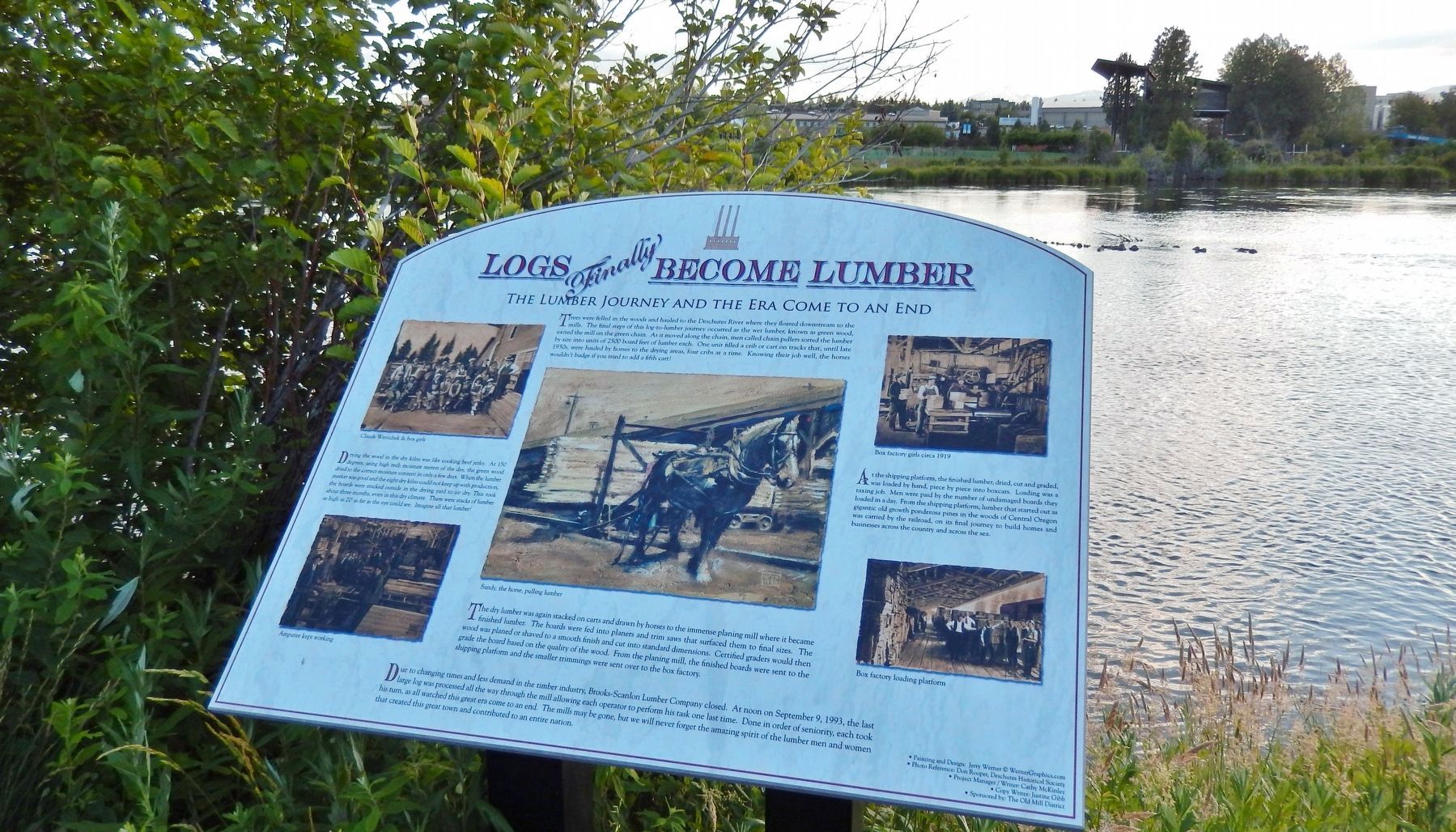Bend in Deschutes County, Oregon — The American West (Northwest)
Logs Finally Become Lumber
The Lumber Journey and the Era Come to an End
Trees were felled in the woods and hauled to the Deschutes River where they floated downstream to the mills. The final steps of this log-to-lumber journey occurred as the wet lumber, known as green wood, exited the mill on the green chain. As it moved along the chain, men called chain pullers sorted the lumber by size into units of 2500 board feet of lumber each. One unit filled a crib or cart on tracks that, until late 1950s, were hauled by horses to the drying areas, four cribs at a time. Knowing their job well, the horses wouldn't budge if you tried to add a fifth cart!
Drying the wood in the dry kilns was like cooking beef jerky. At 150 degrees, using high tech moisture meters of the day the green wood dried to the correct moisture content in only a few days. When the lumber market was good and the eight dry kilns could not keep up with production, the boards were stacked outside in the drying yard to air dry. This took about three months, even in this dry climate. There were stacks of lumber as high as 20' as far as the eye could see. Imagine all that lumber!
The dry lumber was again stacked on carts and drawn by horses to the immense planing mill where it became finished lumber. The boards were fed into planers and trim saws that surfaced them to final sizes. The wood was planed or shaved to a smooth finish and cut into standard dimensions. Certified graders would then grade the board based on the quality of the wood. From the planing mill, the finished boards were sent to the shipping platform and the smaller trimmings were sent over to the box factory.
At the shipping platform, the finished lumber, dried, cut and graded, was loaded by hand, piece by piece into boxcars. Loading was a taxing job. Men were paid by the number of undamaged boards they loaded in a day. From the shipping platform, lumber that started out as gigantic old growth ponderosa pines in the woods of Central Oregon was carried by the railroad, on its final journey to build homes and businesses across the country and across the sea.
Due to changing times and less demand in the timber industry, Brooks-Scanlon Lumber Company closed. At noon on September 9, 1993, the last large log was processed all the way through the mill allowing each operator to perform his task one last time. Done in order of seniority, each took his turn, as all watched this great era come to an end. The mills may be gone, but we will never forget the amazing spirit of the lumber men and women that created this great town and contributed to an entire nation.
Erected by The Old Mill District.
Topics. This historical marker is listed in these topic lists: Horticulture & Forestry • Industry & Commerce • Settlements & Settlers.
Location. 44° 2.826′ N, 121° 18.976′ W. Marker is in Bend, Oregon, in Deschutes County. Marker can be reached from SW Powerhouse Drive north of SW Columbia Street when traveling west. Marker is located along the Deschutes River walkway, on the east side of the river, in Bend's Old Mill District. Touch for map. Marker is at or near this postal address: 375 SW Powerhouse Drive, Bend OR 97702, United States of America. Touch for directions.
Other nearby markers. At least 8 other markers are within walking distance of this marker. The Mill Transformed Trees into Highly Prized Lumber (within shouting distance of this marker); Thank Goodness for Water and Gravity (about 500 feet away, measured in a direct line); Today's Old Mill District (about 700 feet away); Location, Location & Location (about 700 feet away); Journey of the Log to Lumber (approx. 0.2 miles away); Home of Kathleen "Klondike Kate" Rockwell (approx. 0.7 miles away); "Klondike Kate" House (approx. 0.7 miles away); Old Bulletin Building (approx. ¾ mile away). Touch for a list and map of all markers in Bend.
Related markers. Click here for a list of markers that are related to this marker. Old Mill District
Credits. This page was last revised on October 14, 2020. It was originally submitted on February 10, 2018, by Cosmos Mariner of Cape Canaveral, Florida. This page has been viewed 173 times since then and 12 times this year. Photos: 1, 2, 3, 4, 5, 6. submitted on February 10, 2018, by Cosmos Mariner of Cape Canaveral, Florida. • Andrew Ruppenstein was the editor who published this page.
